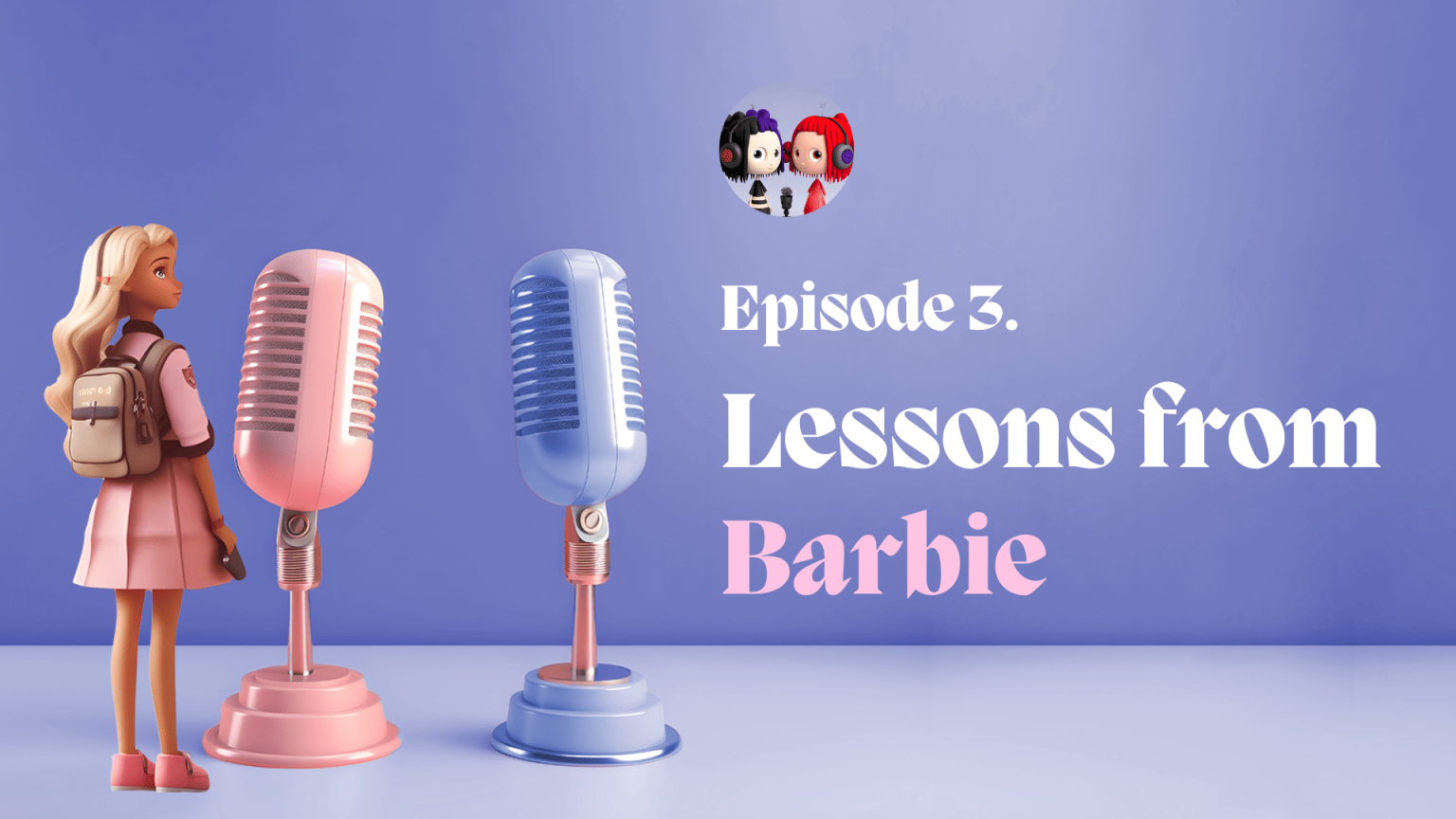
Hi there! Welcome to today's episode, where we'll discuss the fantastic Barbie campaign of 2023! Barbie is such an iconic and timeless figure, and it's been able to stay relevant year after year by keeping up with the times and tapping into the creativity of its fans.
This new movie campaign is no different, and it's captured the attention of people of all ages and industries. And it managed to create quite a lot of buzz on the Internet. Today, we'll be taking a closer look at what made the brand campaigns so successful and how we can use their innovative strategies and appeal to keep our projects fresh and exciting. So, let's get started!
Get 10% Discount on Your First Order at Contenteam!
Table of Contents
Short History of Barbie Marketing and Its Social Impact
The iconic Barbie doll was introduced to the world in 1959 by Ruth Handler, co-founder and senior vice president of Mattel Inc., Inspired by the German analog Bild Lilli, Barbie was designed to provide kids with an imaginative playmate that was more than just a woman figure. The success of it was immediate, and she quickly became the cornerstone of Mattel's sales. Over the years, toys have undergone numerous transformations to keep up with the changing times. The children play embraced diversity by introducing women dolls of different ethnicities, outfits, body types, and abilities. Mattel has also expanded the idea universe by offering playsets, accessories, movies, and television shows featuring the beloved character.
Creating a Lasting Impression
Barbie's marketing strategy revolves around creating a solid identity. This is achieved through consistent messaging, visuals, and storytelling that resonate with the target audience in America and the other world.
Barbie's Core Values
The core values of the branding are inclusivity, imagination, and representation. These values guide the core decisions, from product development to marketing initiatives, ensuring that the messaging remains consistent and appealing to consumers.
Inclusivity in Barbie Marketing Strategies
Barbie has made significant strides in promoting inclusivity and diversity over the years. By introducing dolls with various body types, dresses, skin tones, hair textures, careers, and interests, the company has demonstrated a commitment to representing diverse individuals and possibilities.
In addition to physical representation, Barbie has partnered with organizations like Black Girls Code to encourage girls of color to pursue careers in STEM fields. The company's dedication to inclusivity has been met with positive responses from parents and kids alike, who appreciate the efforts to promote diversity and representation.
List Of Inclusive Barbie Dolls Released from 2010 to 2023
Year | Doll | Notable Features |
2010 |
| Introduced dolls with various body types |
2012 |
| Doll with a prosthetic leg |
2014 |
| Doll in a business setting |
2016 |
| Doll honoring the first African American principal dancer at the American Ballet Theatre |
2017 |
| Doll wearing a hijab, inspired by fencer Ibtihaj Muhammad |
2018 |
| Doll promoting STEM fields for girls |
2019 |
| Doll with the skin condition vitiligo |
2019 |
| Doll with a wheelchair and accessible ramp |
2021 |
| Doll honoring the first Hollywood star of Asian descent |
2022 |
| Dolls made from recycled ocean-bound plastics |
2022 |
| Actress and LGBTQ activist Laverne Cox is getting her own Barbie. Mattel has created a Barbie doll in her likeness as part of its Tribute Collection. The company often models dolls after real-life people, and this is the first trans-Barbie they have ever made. |
2023 |
| Mattel partnered with US charity and medical experts to create part of the ‘most diverse and inclusive doll line’ Barbie is launching its first doll with Down’s syndrome in an effort to help more children find a toy that represents them. Mattel bosses said they wanted to bring out the doll to “enable all children to see themselves in Barbie”. They partnered with the US National Down Syndrome Society (NDSS) to market the product. |
Decoding Barbie's Visual Solutions
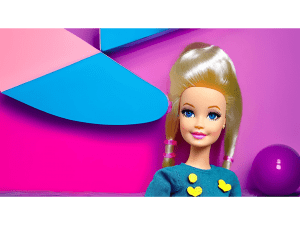 From the early days of the Barbie brand inception, Matelhas consistently adapted its design aesthetics to reflect the changing times and cultural shifts. From the 1960s to the present day, their visual solutions have evolved to incorporate diverse elements such as fashion trends, social movements, and technological advancements.
From the early days of the Barbie brand inception, Matelhas consistently adapted its design aesthetics to reflect the changing times and cultural shifts. From the 1960s to the present day, their visual solutions have evolved to incorporate diverse elements such as fashion trends, social movements, and technological advancements.
In the 1960s, Barbie's design aesthetic focused on the fashion and cultural trends of that era. One iconic example is the "American Girl" Barbie, released in 1965. This popular toy reflected the Mod girl fashion of the time, featuring a sleek bob hairstyle, side-glancing eyes, and a bendable leg design that made her more poseable than previous Barbie dolls. This design adaptation demonstrated the brand's ability to keep up with contemporary fashion trends and maintain its appeal among American girls.
Color Palette and Typography
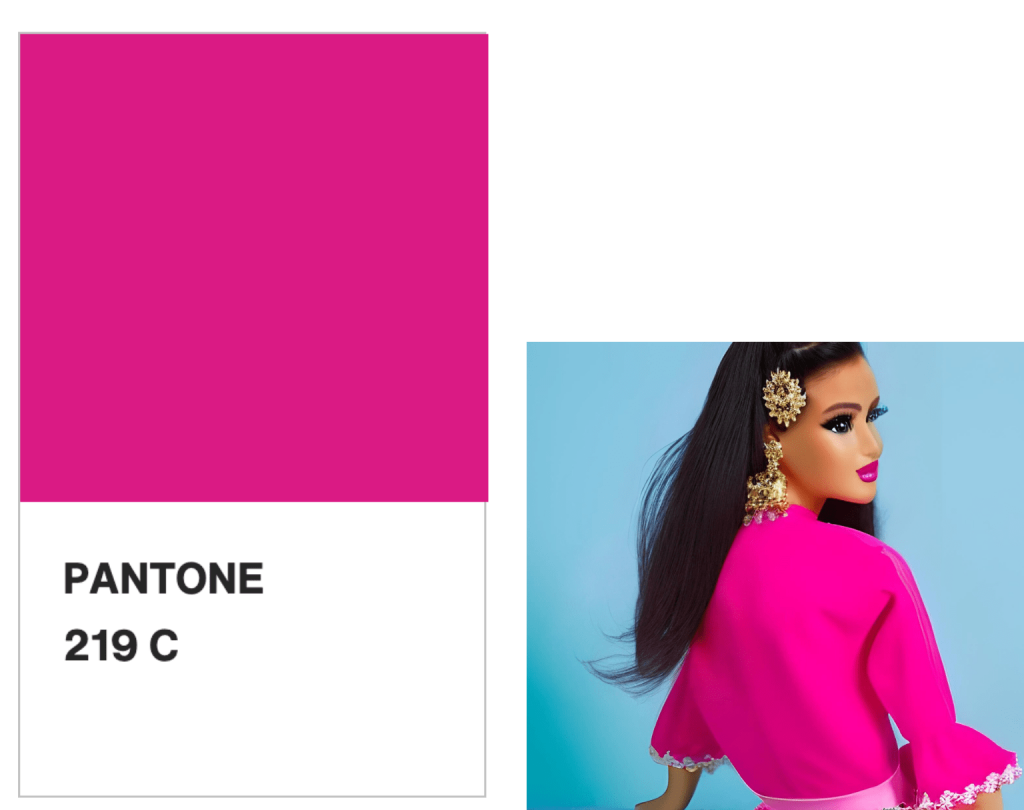 One of the key aspects of Barbie's design code is the clever use of color and typography. The brand has consistently utilized a vibrant color palette, prominently featuring pink, which has become synonymous with the Barbie identity. In fact, the specific shade of pink associated with the brand, Pantone 219C, is often referred to as the word "Barbie Pink." This bold and eye-catching color choice was first launched with the packaging of the original Barbie in 1959, and has since remained a central component of the future visual identity, such as photos, clothes, online market campaigns, and films.
One of the key aspects of Barbie's design code is the clever use of color and typography. The brand has consistently utilized a vibrant color palette, prominently featuring pink, which has become synonymous with the Barbie identity. In fact, the specific shade of pink associated with the brand, Pantone 219C, is often referred to as the word "Barbie Pink." This bold and eye-catching color choice was first launched with the packaging of the original Barbie in 1959, and has since remained a central component of the future visual identity, such as photos, clothes, online market campaigns, and films.
In addition to the signature pink, the color palette has expanded over the years to include other complementary colors such as purple, blue, and yellow. These vibrant colors not only create visual interest but also help convey the fun, aspirational, and empowering nature of the brand.
As for typography, Barbie has been using various typefaces that convey a sense of playfulness and elegance throughout its history. One of the most recognizable fonts associated with the brand is the "Barbie Medium" typeface, which was first introduced in the early 1990s. This custom font features a mix of thick and thin strokes, rounded edges, and elongated forms, giving it a distinct and whimsical appearance that appeals to the brand's target audience.
Another example of thoughtful use of typography is the 2015 "You Can Be Anything" campaign, which featured a bold and modern sans-serif font. This campaign aimed to empower youngsters by showcasing the endless possibilities and career paths they can pursue, and the contemporary typeface choice effectively conveyed this message of empowerment and confidence.
So, the strategic use of color and typography has played a significant role in establishing and maintaining the brand's identity over the years. By consistently incorporating a vibrant color palette, prominently featuring "Barbie Pink," and selecting playful yet elegant typefaces, the brand has successfully created a visual language that resonates with its audience and communicates its core values.
Barbie’s Audience and Connection With Consumers
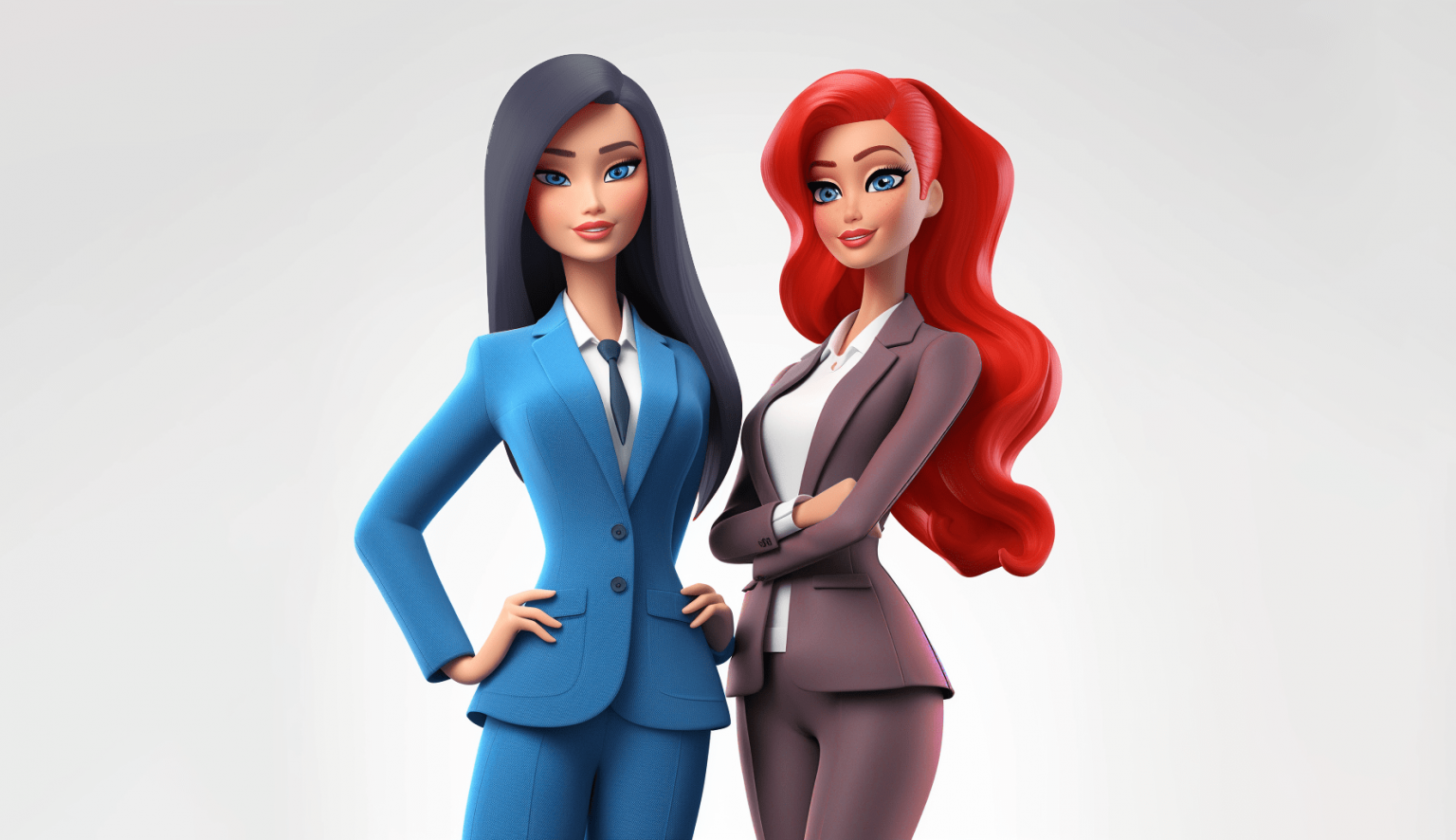
Barbie Toys have expanded its audience beyond its traditional target of kids to include consumers of all ages, genders, and backgrounds.
The company has also expanded its marketing efforts to reach millennial parents, tapping into their nostalgia and positioning Barbie as a timeless and relevant toy. This audience extension has allowed Barbie to remain a beloved toy for children, a cultural icon, and a source of inspiration for people of all ages.
More Than Just A Merch
Barbie's audience extension and connection to consumers go beyond dolls and merchandise. They have expanded sales using various mediums, including film, TV shows, online, and video games. The Barbie movies have been successful with audiences, with over 30 films released to date. The brand has also partnered with popular franchises such as Star Wars and Harry Potter to create Barbie dolls inspired by these franchises.
Additionally, Barbie has a strong social media presence with millions of followers across various platforms. The brand engages with its audience through various online campaigns, challenges, and collaborations with influencers. With its commitment to inclusivity and diversity, Barbie has become a cultural icon, resonating with consumers across generations.
Expanding The Target Audience
From its original target audience of young girls, Barbie has expanded its reach to include a wider range of ages, genders, and cultural backgrounds. Mattel has created a diverse range of dolls that appeal to a broader audience, including Ken, baby dolls, and the Barbie Fashionista line, which allowed audiences to play with different body types, skin tones, and hair textures.
Additionally, the brand has partnered with celebrities and organizations to create dolls that celebrate and represent various cultural icons and historical figures, including Frida Kahlo, Rosa Parks, and Maya Angelou. By expanding its audience and offering inclusive options, Barbie has solidified its connection to consumers who appreciate and identify with the brand's message of self-expression and empowerment.
The Importance of CSR
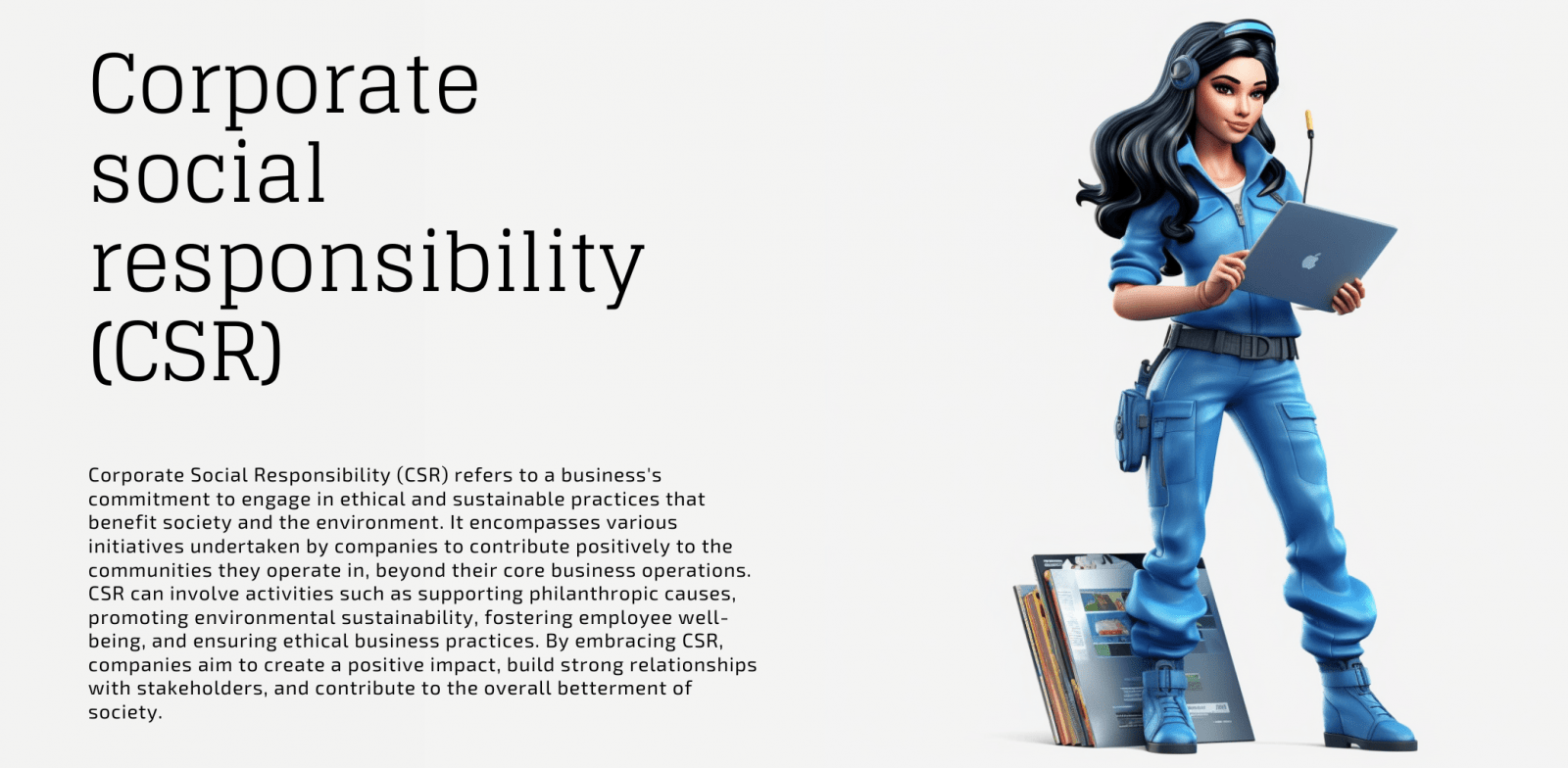 Corporate social responsibility (CSR) plays a crucial role in Barbie's marketing strategy. Recognizing the growing concerns over environmental sustainability, Mattel has taken steps to reduce the environmental impact of its products. For example, the company has committed to using 100% recycled or sustainably sourced materials in their packaging by 2025, and they have introduced a Barbie Loves the Ocean line made from recycled ocean-bound plastics.
Corporate social responsibility (CSR) plays a crucial role in Barbie's marketing strategy. Recognizing the growing concerns over environmental sustainability, Mattel has taken steps to reduce the environmental impact of its products. For example, the company has committed to using 100% recycled or sustainably sourced materials in their packaging by 2025, and they have introduced a Barbie Loves the Ocean line made from recycled ocean-bound plastics.
Empowering Girls and Women
Barbie's marketing also emphasizes the brand's commitment to empowering girls and women. Through initiatives like the "Dream Gap Project" and the "Shero" collection, Barbie aims to inspire young girls to break gender barriers and pursue their dreams, no matter how big or small. By partnering with inspiring role models and sharing their stories, Barbie reinforces its core values and strengthens its connection with consumers.
Barbie's Movie Viral 2023’s UGC Movie Campaign: The Barbie Selfie Generator
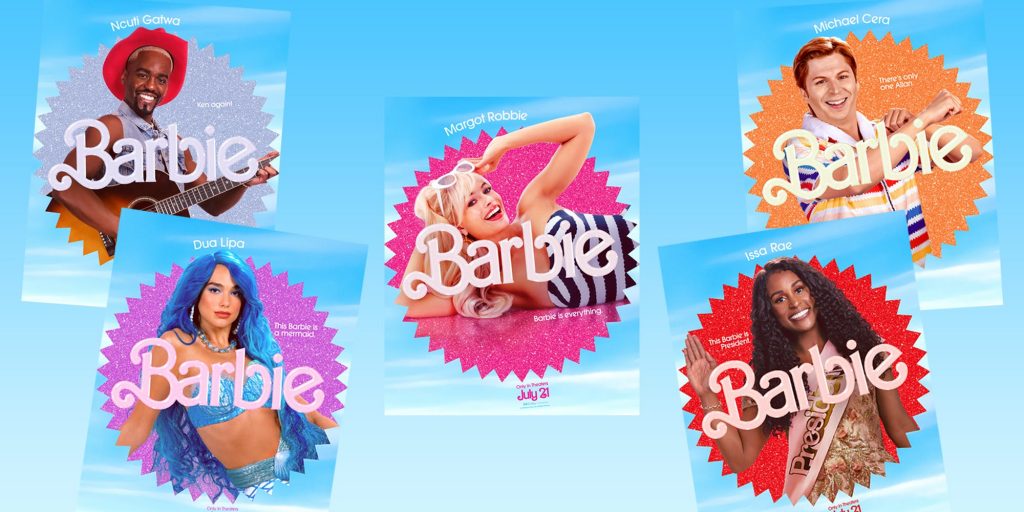 In April 2023, Barbie’s marketing team took the world by storm with an innovative user-generated content (UGC) idea called the Barbie Selfie Generator. This tool quickly went viral, capturing the attention of millions across the globe. Let’s dive deeper into how this UGC playing tool works and why it became such a massive success.
In April 2023, Barbie’s marketing team took the world by storm with an innovative user-generated content (UGC) idea called the Barbie Selfie Generator. This tool quickly went viral, capturing the attention of millions across the globe. Let’s dive deeper into how this UGC playing tool works and why it became such a massive success.
How the Barbie Selfie Generator Works
The Barbie Selfie Generator allows users to create memes featuring themselves as the main character in a Barbie movie. Utilizing branded materials and cast images provided on the website, users can effortlessly transform their selfies into nostalgic Barbie-themed posters. The tool is incredibly user-friendly, making it easy for people to share their creations across various social media platforms with a single click.
The Nostalgic Factor
One of the most significant aspects of the Barbie Selfie Generator is its nostalgic appeal. The posters are designed in the classic Barbie style, which is familiar and beloved by multiple generations, particularly millennials who grew up in the 90s with her as an essential part of their childhood entertainment.
This nostalgic touch played a crucial role in the success of the UGC play campaign. By combining nostalgia with cutting-edge AR filters, marketers effectively bridged the gap between the past and the present, resonating with a wide range of consumers.
Impressive Success Metrics
The Selfie Generator campaign boasts some truly impressive statistics. With a positive response rate of 31% and a remarkably low negative feedback rate of only 4%, it’s evident that the campaign struck a chord with its target audience. Furthermore, the conversion rate reached an astounding 67.5%, highlighting the incredible impact of this viral marketing campaign.
Key Factors Behind the Campaign’s Success
Several factors contributed to the massive success of the Barbie Selfie Generator campaign:
- Ease of use. The user-friendly nature of the tool facilitated the creation and sharing of UGC, driving widespread engagement.
- Nostalgia. By incorporating classic Barbies elements from the 90s, the campaign appealed to a broad audience, from millennials reminiscing about their childhood to younger generations intrigued by the toys and the aesthetics of the era.
- Precise targeting. The campaign effectively targeted a diverse demographic, including millennials, their parents, and younger generations who appreciate the culture of the 90s.
The Barbie Selfie Generator campaign’s success can be attributed to its timely execution, nostalgic appeal, and seamless integration of user-generated content and AR filters. By tapping into the power of nostalgia and innovative technology, Barbie managed to create a marketing campaign that resonated with a wide audience and garnered remarkable results.
How Can Other Brands Repeat the Barbie Marketing Success in Terms of Branding and Design Solutions?
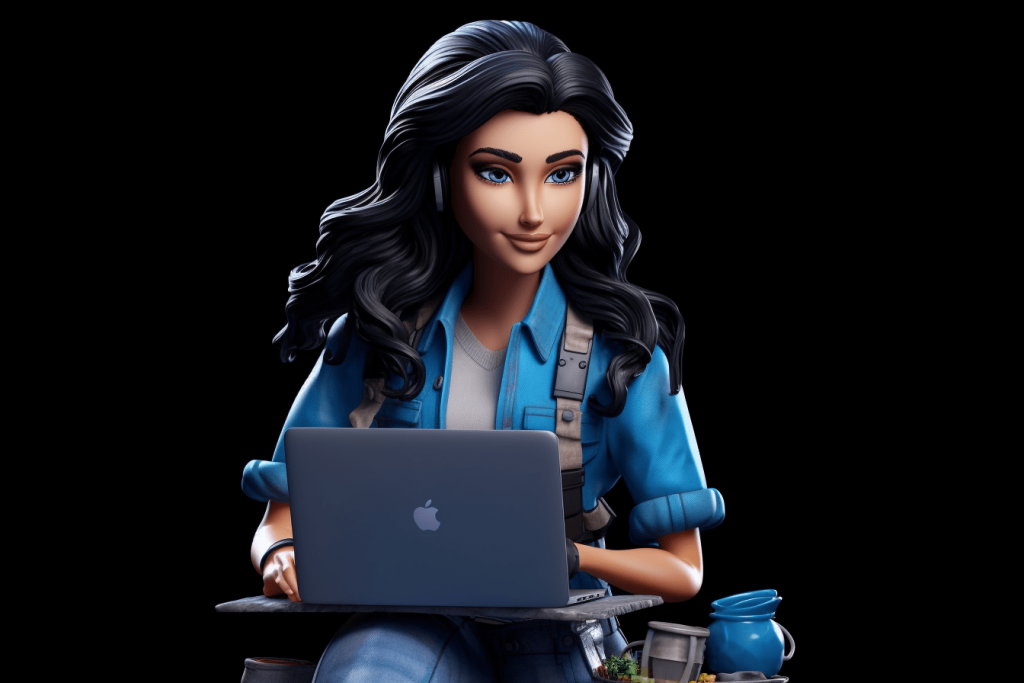 While it is difficult to replicate the exact success of a brand like Barbie, other brands can learn from their marketing and design strategies to improve their own performance. Here are some key takeaways from Barbie’s success that can be applied to other brands:
While it is difficult to replicate the exact success of a brand like Barbie, other brands can learn from their marketing and design strategies to improve their own performance. Here are some key takeaways from Barbie’s success that can be applied to other brands:
- Focus on your target audience. Understand the needs, preferences, and aspirations of your target audience, and create products and marketing campaigns that resonate with them.
- Adapt to cultural shifts and trends. Stay relevant by closely monitoring changing trends and cultural shifts. Adapt your products and marketing strategies accordingly to maintain a strong connection with your audience.
- Embrace inclusivity and diversity. Incorporate diverse representation in your products and marketing campaigns to appeal to a broader audience and demonstrate your commitment to inclusivity.
- Leverage nostalgia. Utilize nostalgic elements in your marketing campaigns to evoke emotions and create a strong connection with your audience, especially if your brand has a long history.
- Invest in effective storytelling. Create compelling stories around your brand and products that engage and resonate with your audience. This can help to establish an emotional connection with consumers and foster loyalty.
- Innovate with technology. Embrace new technologies, such as augmented reality and social media platforms, to create engaging and shareable marketing campaigns that can go viral.
- Develop a strong visual identity. Establish a consistent visual identity, including color palette and typography, that reflects your brand’s values and personality. This will help create a recognizable and memorable image.
- Collaborate with strategic partners. Partner with influencers, designers, or organizations that align with your brand values and can help amplify your message to a wider audience.
- Measure and analyze success. Continuously track the performance of your marketing team and design solutions, and use this data to optimize and improve your strategies.
By adopting these principles and customizing them to suit your brand’s unique identity, you can increase your chances of achieving success in terms of marketing and design solutions.
FAQ

Q: What is the Barbie promotion strategy insights?
A: The Barbie promotion strategy involves a mix of traditional and digital marketing channels, including TV commercials, print ads, social media campaigns, and collaborations with influencers. The brand focuses on empowering messages, nostalgia, and inclusivity to engage with its target audience.
Q: How was Barbie originally marketed?
A: Barbie was originally marketed as a teenage fashion model in 1959. They used TV commercials, print ads, and strategic partnerships with popular fashion designers to position the product as an aspirational and stylish toy for youngsters.
Q: Who is the target market for Barbie?
A: The primary target market for Barbie includes children aged 3-12 years old. However, the brand also appeals to adult collectors, parents, and individuals who have a nostalgic connection to the doll.
Q: What is the Barbie fashion trend?
A: The Barbie fashion trend refers to the ever-evolving clothing styles and accessories featured on the doll. Throughout its history, Barbie has consistently incorporated contemporary fashion trends and styles, making the popular toy an influential figure in the fashion world.
Q: How did Barbie become popular?
A: She became popular through effective marketing strategies, a strong connection to fashion trends, and a focus on empowering messages. The company’s ability to adapt to cultural shifts and incorporate new technologies has also contributed to its enduring popularity.
Q: How big is the Barbie market?
A: The Barbie market is sizable, with millions of dolls sold worldwide each year. The company has expanded beyond to include accessories, playsets, movies, and a wide range of merchandise, making it a major player in the global toy industry.
Podcast Hosts

Hi there! Welcome to today's episode, where we'll discuss the fantastic Barbie campaign of 2023! Barbie is such an iconic and timeless figure, and it's been able to stay relevant year after year by keeping up with the times and tapping into the creativity of its fans.
This new movie campaign is no different, and it's captured the attention of people of all ages and industries. And it managed to create quite a lot of buzz on the Internet. Today, we'll be taking a closer look at what made the brand campaigns so successful and how we can use their innovative strategies and appeal to keep our projects fresh and exciting. So, let's get started!
Get 10% Discount on Your First Order at Contenteam!
Table of Contents
Short History of Barbie Marketing and Its Social Impact
The iconic Barbie doll was introduced to the world in 1959 by Ruth Handler, co-founder and senior vice president of Mattel Inc., Inspired by the German analog Bild Lilli, Barbie was designed to provide kids with an imaginative playmate that was more than just a woman figure. The success of it was immediate, and she quickly became the cornerstone of Mattel's sales. Over the years, toys have undergone numerous transformations to keep up with the changing times. The children play embraced diversity by introducing women dolls of different ethnicities, outfits, body types, and abilities. Mattel has also expanded the idea universe by offering playsets, accessories, movies, and television shows featuring the beloved character.
Creating a Lasting Impression
Barbie's marketing strategy revolves around creating a solid identity. This is achieved through consistent messaging, visuals, and storytelling that resonate with the target audience in America and the other world.
Barbie's Core Values
The core values of the branding are inclusivity, imagination, and representation. These values guide the core decisions, from product development to marketing initiatives, ensuring that the messaging remains consistent and appealing to consumers.
Inclusivity in Barbie Marketing Strategies
Barbie has made significant strides in promoting inclusivity and diversity over the years. By introducing dolls with various body types, dresses, skin tones, hair textures, careers, and interests, the company has demonstrated a commitment to representing diverse individuals and possibilities.
In addition to physical representation, Barbie has partnered with organizations like Black Girls Code to encourage girls of color to pursue careers in STEM fields. The company's dedication to inclusivity has been met with positive responses from parents and kids alike, who appreciate the efforts to promote diversity and representation.
List Of Inclusive Barbie Dolls Released from 2010 to 2023
Year | Doll | Notable Features |
2010 |
| Introduced dolls with various body types |
2012 |
| Doll with a prosthetic leg |
2014 |
| Doll in a business setting |
2016 |
| Doll honoring the first African American principal dancer at the American Ballet Theatre |
2017 |
| Doll wearing a hijab, inspired by fencer Ibtihaj Muhammad |
2018 |
| Doll promoting STEM fields for girls |
2019 |
| Doll with the skin condition vitiligo |
2019 |
| Doll with a wheelchair and accessible ramp |
2021 |
| Doll honoring the first Hollywood star of Asian descent |
2022 |
| Dolls made from recycled ocean-bound plastics |
2022 |
| Actress and LGBTQ activist Laverne Cox is getting her own Barbie. Mattel has created a Barbie doll in her likeness as part of its Tribute Collection. The company often models dolls after real-life people, and this is the first trans-Barbie they have ever made. |
2023 |
| Mattel partnered with US charity and medical experts to create part of the ‘most diverse and inclusive doll line’ Barbie is launching its first doll with Down’s syndrome in an effort to help more children find a toy that represents them. Mattel bosses said they wanted to bring out the doll to “enable all children to see themselves in Barbie”. They partnered with the US National Down Syndrome Society (NDSS) to market the product. |
Decoding Barbie's Visual Solutions
 From the early days of the Barbie brand inception, Matelhas consistently adapted its design aesthetics to reflect the changing times and cultural shifts. From the 1960s to the present day, their visual solutions have evolved to incorporate diverse elements such as fashion trends, social movements, and technological advancements.
From the early days of the Barbie brand inception, Matelhas consistently adapted its design aesthetics to reflect the changing times and cultural shifts. From the 1960s to the present day, their visual solutions have evolved to incorporate diverse elements such as fashion trends, social movements, and technological advancements.
In the 1960s, Barbie's design aesthetic focused on the fashion and cultural trends of that era. One iconic example is the "American Girl" Barbie, released in 1965. This popular toy reflected the Mod girl fashion of the time, featuring a sleek bob hairstyle, side-glancing eyes, and a bendable leg design that made her more poseable than previous Barbie dolls. This design adaptation demonstrated the brand's ability to keep up with contemporary fashion trends and maintain its appeal among American girls.
Color Palette and Typography
 One of the key aspects of Barbie's design code is the clever use of color and typography. The brand has consistently utilized a vibrant color palette, prominently featuring pink, which has become synonymous with the Barbie identity. In fact, the specific shade of pink associated with the brand, Pantone 219C, is often referred to as the word "Barbie Pink." This bold and eye-catching color choice was first launched with the packaging of the original Barbie in 1959, and has since remained a central component of the future visual identity, such as photos, clothes, online market campaigns, and films.
One of the key aspects of Barbie's design code is the clever use of color and typography. The brand has consistently utilized a vibrant color palette, prominently featuring pink, which has become synonymous with the Barbie identity. In fact, the specific shade of pink associated with the brand, Pantone 219C, is often referred to as the word "Barbie Pink." This bold and eye-catching color choice was first launched with the packaging of the original Barbie in 1959, and has since remained a central component of the future visual identity, such as photos, clothes, online market campaigns, and films.
In addition to the signature pink, the color palette has expanded over the years to include other complementary colors such as purple, blue, and yellow. These vibrant colors not only create visual interest but also help convey the fun, aspirational, and empowering nature of the brand.
As for typography, Barbie has been using various typefaces that convey a sense of playfulness and elegance throughout its history. One of the most recognizable fonts associated with the brand is the "Barbie Medium" typeface, which was first introduced in the early 1990s. This custom font features a mix of thick and thin strokes, rounded edges, and elongated forms, giving it a distinct and whimsical appearance that appeals to the brand's target audience.
Another example of thoughtful use of typography is the 2015 "You Can Be Anything" campaign, which featured a bold and modern sans-serif font. This campaign aimed to empower youngsters by showcasing the endless possibilities and career paths they can pursue, and the contemporary typeface choice effectively conveyed this message of empowerment and confidence.
So, the strategic use of color and typography has played a significant role in establishing and maintaining the brand's identity over the years. By consistently incorporating a vibrant color palette, prominently featuring "Barbie Pink," and selecting playful yet elegant typefaces, the brand has successfully created a visual language that resonates with its audience and communicates its core values.
Barbie’s Audience and Connection With Consumers

Barbie Toys have expanded its audience beyond its traditional target of kids to include consumers of all ages, genders, and backgrounds.
The company has also expanded its marketing efforts to reach millennial parents, tapping into their nostalgia and positioning Barbie as a timeless and relevant toy. This audience extension has allowed Barbie to remain a beloved toy for children, a cultural icon, and a source of inspiration for people of all ages.
More Than Just A Merch
Barbie's audience extension and connection to consumers go beyond dolls and merchandise. They have expanded sales using various mediums, including film, TV shows, online, and video games. The Barbie movies have been successful with audiences, with over 30 films released to date. The brand has also partnered with popular franchises such as Star Wars and Harry Potter to create Barbie dolls inspired by these franchises.
Additionally, Barbie has a strong social media presence with millions of followers across various platforms. The brand engages with its audience through various online campaigns, challenges, and collaborations with influencers. With its commitment to inclusivity and diversity, Barbie has become a cultural icon, resonating with consumers across generations.
Expanding The Target Audience
From its original target audience of young girls, Barbie has expanded its reach to include a wider range of ages, genders, and cultural backgrounds. Mattel has created a diverse range of dolls that appeal to a broader audience, including Ken, baby dolls, and the Barbie Fashionista line, which allowed audiences to play with different body types, skin tones, and hair textures.
Additionally, the brand has partnered with celebrities and organizations to create dolls that celebrate and represent various cultural icons and historical figures, including Frida Kahlo, Rosa Parks, and Maya Angelou. By expanding its audience and offering inclusive options, Barbie has solidified its connection to consumers who appreciate and identify with the brand's message of self-expression and empowerment.
The Importance of CSR
 Corporate social responsibility (CSR) plays a crucial role in Barbie's marketing strategy. Recognizing the growing concerns over environmental sustainability, Mattel has taken steps to reduce the environmental impact of its products. For example, the company has committed to using 100% recycled or sustainably sourced materials in their packaging by 2025, and they have introduced a Barbie Loves the Ocean line made from recycled ocean-bound plastics.
Corporate social responsibility (CSR) plays a crucial role in Barbie's marketing strategy. Recognizing the growing concerns over environmental sustainability, Mattel has taken steps to reduce the environmental impact of its products. For example, the company has committed to using 100% recycled or sustainably sourced materials in their packaging by 2025, and they have introduced a Barbie Loves the Ocean line made from recycled ocean-bound plastics.
Empowering Girls and Women
Barbie's marketing also emphasizes the brand's commitment to empowering girls and women. Through initiatives like the "Dream Gap Project" and the "Shero" collection, Barbie aims to inspire young girls to break gender barriers and pursue their dreams, no matter how big or small. By partnering with inspiring role models and sharing their stories, Barbie reinforces its core values and strengthens its connection with consumers.
Barbie's Movie Viral 2023’s UGC Movie Campaign: The Barbie Selfie Generator
 In April 2023, Barbie’s marketing team took the world by storm with an innovative user-generated content (UGC) idea called the Barbie Selfie Generator. This tool quickly went viral, capturing the attention of millions across the globe. Let’s dive deeper into how this UGC playing tool works and why it became such a massive success.
In April 2023, Barbie’s marketing team took the world by storm with an innovative user-generated content (UGC) idea called the Barbie Selfie Generator. This tool quickly went viral, capturing the attention of millions across the globe. Let’s dive deeper into how this UGC playing tool works and why it became such a massive success.
How the Barbie Selfie Generator Works
The Barbie Selfie Generator allows users to create memes featuring themselves as the main character in a Barbie movie. Utilizing branded materials and cast images provided on the website, users can effortlessly transform their selfies into nostalgic Barbie-themed posters. The tool is incredibly user-friendly, making it easy for people to share their creations across various social media platforms with a single click.
The Nostalgic Factor
One of the most significant aspects of the Barbie Selfie Generator is its nostalgic appeal. The posters are designed in the classic Barbie style, which is familiar and beloved by multiple generations, particularly millennials who grew up in the 90s with her as an essential part of their childhood entertainment.
This nostalgic touch played a crucial role in the success of the UGC play campaign. By combining nostalgia with cutting-edge AR filters, marketers effectively bridged the gap between the past and the present, resonating with a wide range of consumers.
Impressive Success Metrics
The Selfie Generator campaign boasts some truly impressive statistics. With a positive response rate of 31% and a remarkably low negative feedback rate of only 4%, it’s evident that the campaign struck a chord with its target audience. Furthermore, the conversion rate reached an astounding 67.5%, highlighting the incredible impact of this viral marketing campaign.
Key Factors Behind the Campaign’s Success
Several factors contributed to the massive success of the Barbie Selfie Generator campaign:
- Ease of use. The user-friendly nature of the tool facilitated the creation and sharing of UGC, driving widespread engagement.
- Nostalgia. By incorporating classic Barbies elements from the 90s, the campaign appealed to a broad audience, from millennials reminiscing about their childhood to younger generations intrigued by the toys and the aesthetics of the era.
- Precise targeting. The campaign effectively targeted a diverse demographic, including millennials, their parents, and younger generations who appreciate the culture of the 90s.
The Barbie Selfie Generator campaign’s success can be attributed to its timely execution, nostalgic appeal, and seamless integration of user-generated content and AR filters. By tapping into the power of nostalgia and innovative technology, Barbie managed to create a marketing campaign that resonated with a wide audience and garnered remarkable results.
How Can Other Brands Repeat the Barbie Marketing Success in Terms of Branding and Design Solutions?
 While it is difficult to replicate the exact success of a brand like Barbie, other brands can learn from their marketing and design strategies to improve their own performance. Here are some key takeaways from Barbie’s success that can be applied to other brands:
While it is difficult to replicate the exact success of a brand like Barbie, other brands can learn from their marketing and design strategies to improve their own performance. Here are some key takeaways from Barbie’s success that can be applied to other brands:
- Focus on your target audience. Understand the needs, preferences, and aspirations of your target audience, and create products and marketing campaigns that resonate with them.
- Adapt to cultural shifts and trends. Stay relevant by closely monitoring changing trends and cultural shifts. Adapt your products and marketing strategies accordingly to maintain a strong connection with your audience.
- Embrace inclusivity and diversity. Incorporate diverse representation in your products and marketing campaigns to appeal to a broader audience and demonstrate your commitment to inclusivity.
- Leverage nostalgia. Utilize nostalgic elements in your marketing campaigns to evoke emotions and create a strong connection with your audience, especially if your brand has a long history.
- Invest in effective storytelling. Create compelling stories around your brand and products that engage and resonate with your audience. This can help to establish an emotional connection with consumers and foster loyalty.
- Innovate with technology. Embrace new technologies, such as augmented reality and social media platforms, to create engaging and shareable marketing campaigns that can go viral.
- Develop a strong visual identity. Establish a consistent visual identity, including color palette and typography, that reflects your brand’s values and personality. This will help create a recognizable and memorable image.
- Collaborate with strategic partners. Partner with influencers, designers, or organizations that align with your brand values and can help amplify your message to a wider audience.
- Measure and analyze success. Continuously track the performance of your marketing team and design solutions, and use this data to optimize and improve your strategies.
By adopting these principles and customizing them to suit your brand’s unique identity, you can increase your chances of achieving success in terms of marketing and design solutions.
FAQ

Q: What is the Barbie promotion strategy insights?
A: The Barbie promotion strategy involves a mix of traditional and digital marketing channels, including TV commercials, print ads, social media campaigns, and collaborations with influencers. The brand focuses on empowering messages, nostalgia, and inclusivity to engage with its target audience.
Q: How was Barbie originally marketed?
A: Barbie was originally marketed as a teenage fashion model in 1959. They used TV commercials, print ads, and strategic partnerships with popular fashion designers to position the product as an aspirational and stylish toy for youngsters.
Q: Who is the target market for Barbie?
A: The primary target market for Barbie includes children aged 3-12 years old. However, the brand also appeals to adult collectors, parents, and individuals who have a nostalgic connection to the doll.
Q: What is the Barbie fashion trend?
A: The Barbie fashion trend refers to the ever-evolving clothing styles and accessories featured on the doll. Throughout its history, Barbie has consistently incorporated contemporary fashion trends and styles, making the popular toy an influential figure in the fashion world.
Q: How did Barbie become popular?
A: She became popular through effective marketing strategies, a strong connection to fashion trends, and a focus on empowering messages. The company’s ability to adapt to cultural shifts and incorporate new technologies has also contributed to its enduring popularity.
Q: How big is the Barbie market?
A: The Barbie market is sizable, with millions of dolls sold worldwide each year. The company has expanded beyond to include accessories, playsets, movies, and a wide range of merchandise, making it a major player in the global toy industry.

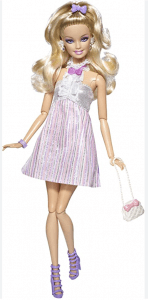 Barbie Fashionistas
Barbie Fashionistas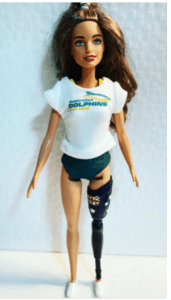 Barbie Paralympic Champion
Barbie Paralympic Champion Entrepreneur Barbie
Entrepreneur Barbie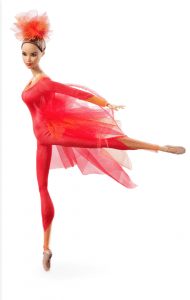 Misty Copeland Barbie
Misty Copeland Barbie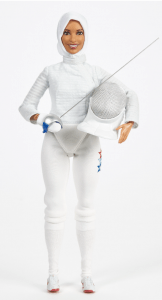 Barbie in Hijab
Barbie in Hijab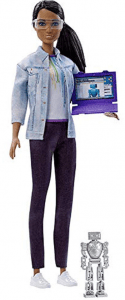 Robotics Engineer Barbie
Robotics Engineer Barbie Barbie with Vitiligo
Barbie with Vitiligo Barbie in a Wheelchair
Barbie in a Wheelchair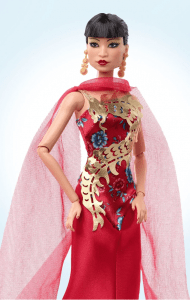 Anna May Wong Barbie
Anna May Wong Barbie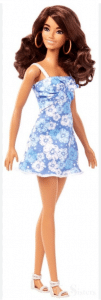 Barbie Loves the Ocean
Barbie Loves the Ocean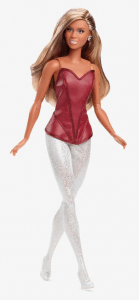 Transgender Barbie
Transgender Barbie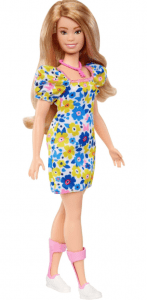 Down Syndrome Barbie
Down Syndrome Barbie





